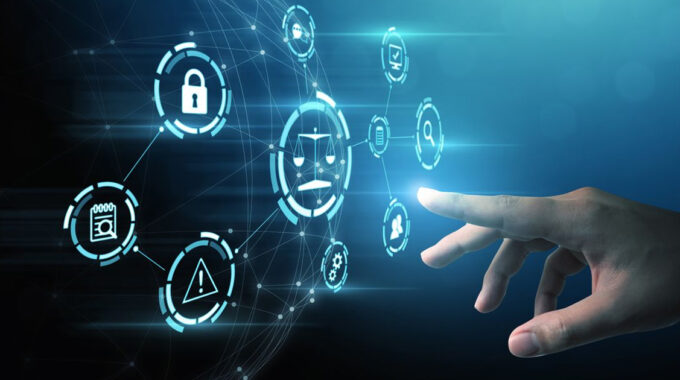
ChatGPT and the Future of Artificial Intelligence
In recent years, the field of artificial intelligence (AI) has witnessed remarkable advancements, pushing the boundaries of what machines can achieve. One such groundbreaking development is ChatGPT, an AI language model developed by OpenAI. This AI-powered chatbot represents a significant leap forward in natural language processing, enabling human-like interactions and opening up a myriad of possibilities for the future of AI. In this article, we will delve into the capabilities of ChatGPT and explore the future of AI.
What is ChatGPT?
ChatGPT is an AI language model developed by OpenAI. It is based on the GPT (Generative Pre-trained Transformer) architecture, specifically the GPT-3.5 variant. GPT models are designed to process and generate human-like text based on the patterns and information they have learned from massive amounts of training data. ChatGPT’s primary function is to facilitate natural language interactions between humans and machines. It has been trained on diverse and extensive datasets, enabling it to understand and respond to a wide range of queries and prompts in a conversational manner. Rather than relying on predefined scripts or rules, ChatGPT utilizes its language processing capabilities to generate contextually relevant and coherent responses.
ChatGPT applications
The potential applications of ChatGPT are vast, ranging from customer support and content generation to educational assistance and creative collaboration. Its ability to understand and generate text in a conversational manner opens up possibilities for human-like interactions with machines, fostering a more personalized and interactive user experience. By harnessing natural language processing, it can comprehend complex requests, troubleshoot issues, and offer relevant solutions. This not only improves customer satisfaction but also enables businesses to streamline their support systems and reduce human workload.
ChatGPT also holds great promise in the realm of education. It can serve as a virtual tutor, providing students with interactive learning experiences. Through conversations, ChatGPT can answer questions, provide explanations, and engage learners in personalized educational journeys. It adapts its responses based on the user’s level of understanding and learning style, fostering a more individualized and effective learning environment.
Overall, ChatGPT represents a significant step forward in the field of natural language processing and human-machine interactions, offering new possibilities for communication and collaboration between humans and AI.
Future of artificial intelligence after ChatGPT
The release of ChatGPT has undoubtedly paved the way for exciting advancements and transformations in the field of artificial intelligence (AI). While it is challenging to predict the exact future of AI, there are several trends and possibilities that may emerge as a result of ChatGPT’s release and its impact on the AI landscape. Here are a few potential directions for the future of AI:
- Enhanced human-AI collaboration: ChatGPT and similar AI models have highlighted the potential of human-AI collaboration. The future may see increased integration of AI systems into various industries, augmenting human capabilities and enabling more efficient and creative problem-solving. Human-AI teams may work together to tackle complex challenges, combining the strengths of AI in data processing and pattern recognition with human intuition, critical thinking, and domain expertise.
- Continued improvements in natural language understanding: ChatGPT has demonstrated significant progress in natural language understanding and generation. Future iterations of AI models may continue to refine language processing capabilities, resulting in even more accurate and contextually aware responses. This could lead to more seamless and human-like interactions with AI systems, enabling applications in areas like customer service, education, and content generation.
- Ethical considerations and responsible AI development: The release of ChatGPT has raised important ethical considerations surrounding AI. The future of AI will likely involve increased emphasis on responsible AI development, including transparency, fairness, and accountability. Developers and researchers will continue to address biases, improve data quality, and refine training processes to mitigate potential risks associated with AI, such as the spread of misinformation and privacy concerns.
- Personalization and customization: AI models like ChatGPT have the potential to become highly personalized and adaptable to individual users’ needs and preferences. As AI systems gather more data and understand user context better, they can tailor their responses and recommendations more effectively. This personalization can enhance user experiences across various domains, including education, healthcare, and entertainment.
- Domain-specific AI models: While ChatGPT is a general-purpose language model, the future may see the development of specialized AI models for specific industries or domains. These models would be trained on domain-specific data, enabling them to provide more accurate and relevant information in those particular areas. For example, healthcare-specific AI models could assist doctors in diagnosing diseases or suggest personalized treatment plans.
- Continued research and advancements: The release of ChatGPT has sparked increased research and exploration in the field of AI. Researchers will continue to push the boundaries of AI technologies, exploring novel architectures, training methodologies, and data representations. This ongoing research will likely lead to the development of more powerful and capable AI models, further expanding the possibilities for AI applications in various sectors.
It is important to note that while these potential directions offer glimpses into the future of AI, they are speculative. The pace and trajectory of AI development will depend on several factors, including technological advancements, ethical considerations, societal acceptance, and regulatory frameworks. It is crucial to approach the future of AI with a balance of optimism, responsible development, and continuous evaluation of its impact on society.
Conclusion
The emergence of ChatGPT marks a significant milestone in the development of AI and its potential applications across various sectors. Its natural language processing capabilities enable human-like interactions, opening up avenues for enhanced customer support, personalized education, and creative content generation. However, we must also remain vigilant about the ethical considerations surrounding AI, promote responsible development, and address the challenges posed by misinformation and deepfakes. Through collaborative efforts between humans and AI, we can harness the transformative power of technologies like ChatGPT, shaping a future where humans and machines work hand in hand to unlock new possibilities and advancements.
ChatGPT-5 is an upgraded version of ChatGPT. It is expected to appear in late 2023 and is supposed to continue to improve natural language processing and text generation. It should also be able to handle longer contexts and be trained using different features.
According to Ben Goertzel, future ChatGPT versions could replace the majority of the work people do today.
The future possibilities and opportunities with ChatGPT are vast and varied. This technology can be used to create personalized conversational agents, enhance customer service and support, automate content creation, and provide virtual personal assistants.



















